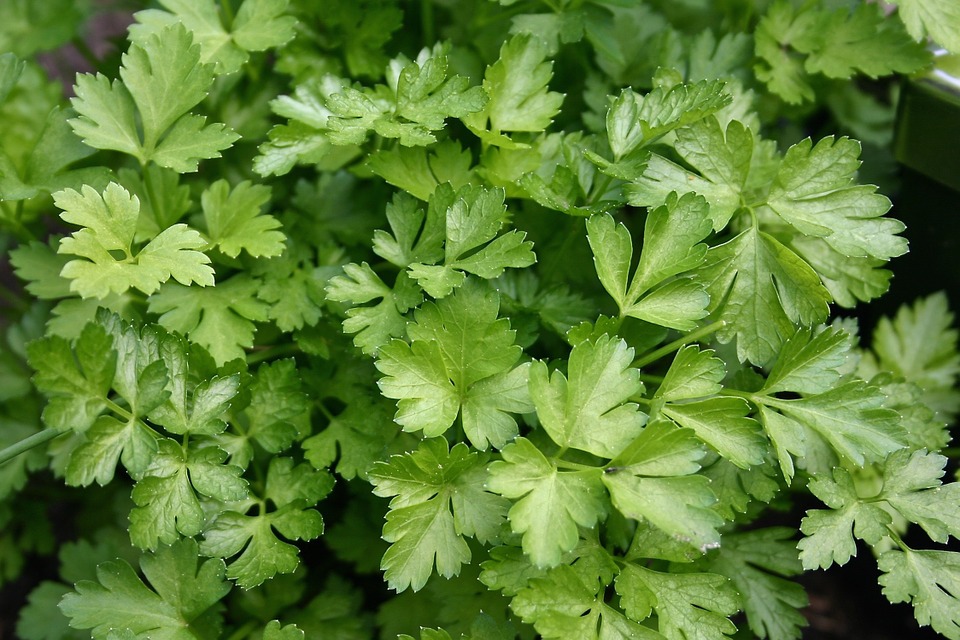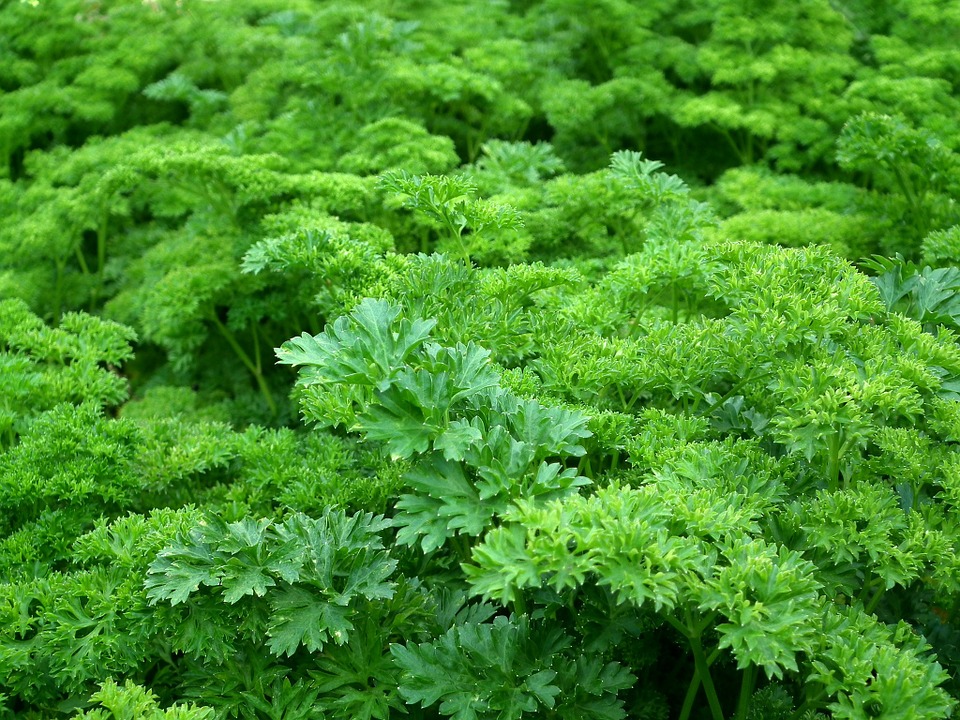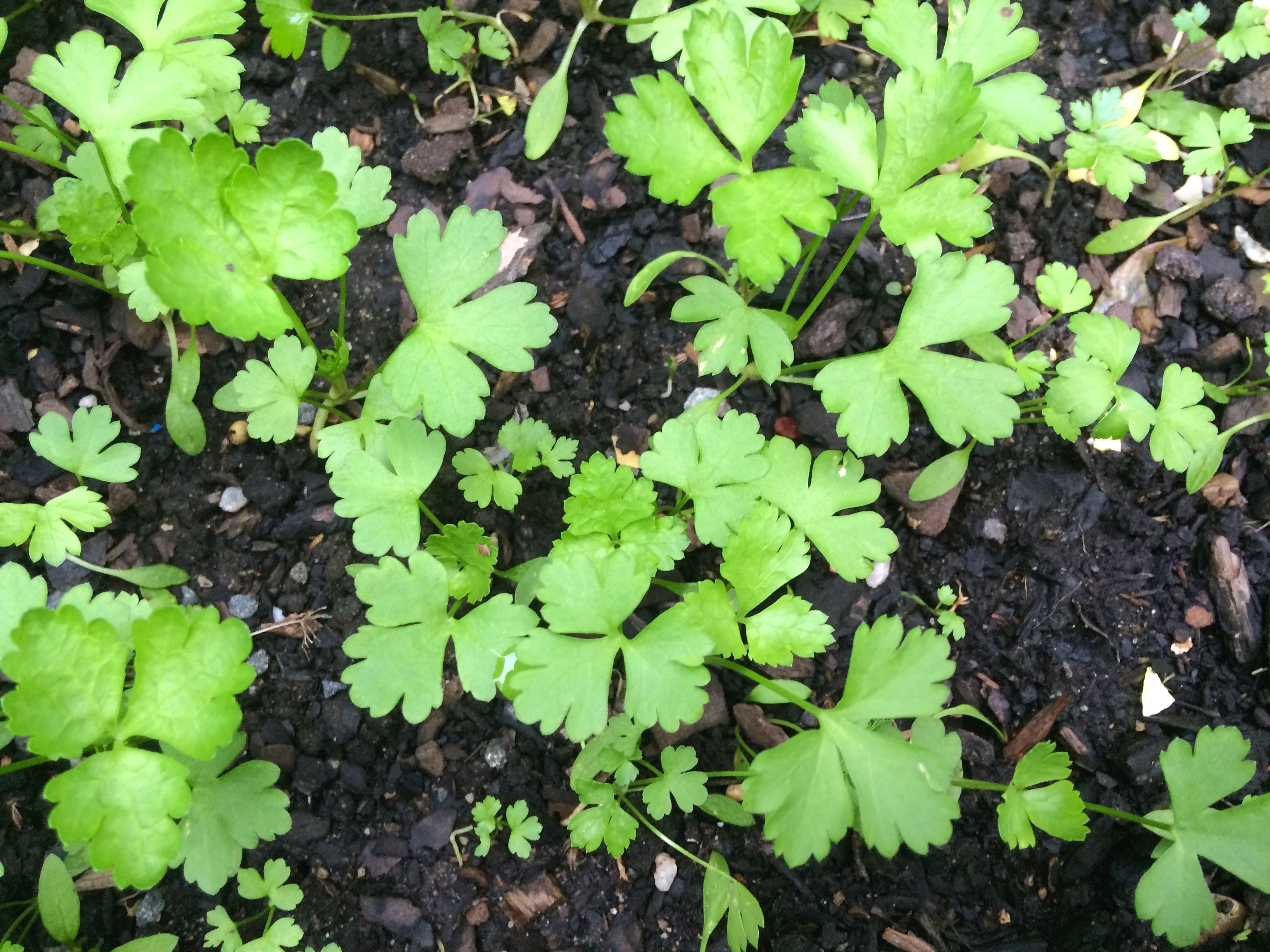Petroselinum crispum

My most vidid memory of living in Auburn is getting a knock on the door from our next door neighbour who asked if she could pick some of the masses of parsley we had growing in our backyard. Of course we invited her through and an hour later the woman came back with big bowl of tabouli for us. It was one of many kind gestures from people on our street.
Description
One of the most commonly grown culinary herbs high in vitamins A, B and C as well as being a source of organic iron and potassium.

Varieties of parsley
- Curly leafed parsley: The most popular variety of parsley that is heavily curly and has a milder flavour (Petroselinum crispum).
- Italian: Also called plain-leafed parsley, this variety has a flat leaf and stronger flavour than curly leafed parsley (Petroselinum crispum var. neapolitanum).
- Giant of Italy: Similar to Italian parsley, this flat-leafed variety has large lush green leaves and is my favourite to grow.
- Hamburg parlsey or parsnip parsley: This variety is also similar to the flat-leafed variety but has a more developed root that can also be eaten.(Petroselinum crispum var. tuberosum).
When can I grow parsley?
Seed can be sown in spring or autumn. Seedlings and established plants can be planted throughout the year in most climates.
Seeds or seedlings?
Either is fine although parsley can be more difficult to grow from seed and it can take between 3 to 6 weeks to germinate. Some people believe in pouring boiling water over seed at planting to help aid germination.

Growing tips
- provide a hummus rich and well-drained soil.
- find a full-sun to semi-shaded position.
- be particularly consistent with watering during dry weather or your parsley will bolt to seed.
- remove flower heads to encourage more leaf growth.
Pests and diseases
Harvesting and use
Pick stalks as required with your fingers or a pair of scissors. Use your parsley for salads, sandwiches, scrambled eggs, pasta, soup and stews.
Happy Gardening!
